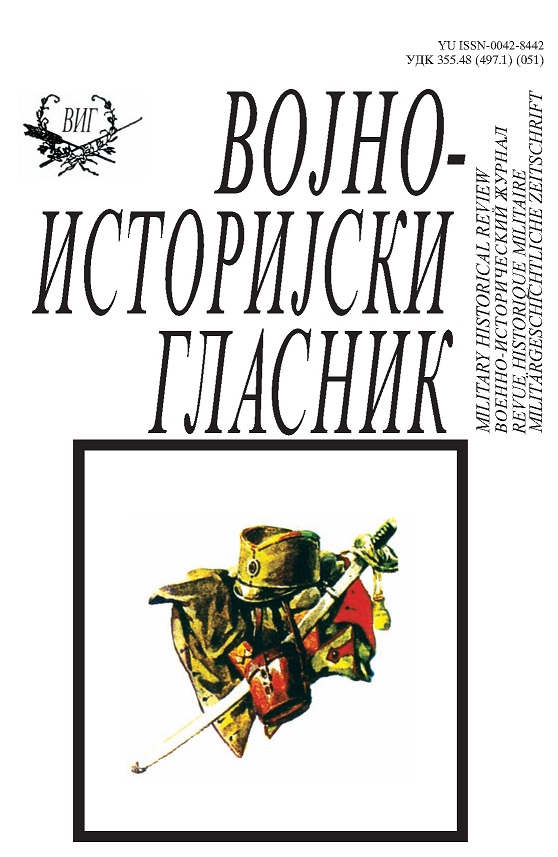Српско наоружање и тактика у делу Јована Кинама
Serbian Armament and Tactics in Writings of John Kinnamo
Author(s): Marko DraškovićSubject(s): Military history, 6th to 12th Centuries
Published by: Institut za strategijska istraživanja
Keywords: Serbs; Byzantium; historical sources; weapons; tactics; Serbian armament; 12th century;
Summary/Abstract: In this work, our task is to reconstruct Serbian armament and tactics of twelfth century, using the writings of John Kinnamos and other contemporary byzantine sources of twelfth century. Among contemporary byzantine sources, Kinnamos gives most of substantial data concerning Serbian armament and tactics of twelfth century. Some valuable data concerning this topic can be found in writings of the other byzantine sources of twelfth century (Anna Komnene, Niketas Choniates, Eustathios of Thessalonica, Michael of Thessalonica). As primary weapons of the Serbs, Kinnamos mentions spears and long shields. The terms he uses for these weapons (δόρατα and ἀσπίδας) are the words which, in Kinnamos` writings and contemporary byzantine sources, denote spears and shields in general meaning; so, it is not possible to determinate from Kinnamos the type of spears and shields that were used by Serbs of twelfth century. Michael of Thessalonica attests Serbian usage of spears and shields in twelfth century, also by terms of general meaning. Kinnamos mentions Serbian usage of sword. The term he uses for sword (ξίφος) is the word which in his writings denotes sword in general meaning; because of that, it is not possible from this term to determinate the type of sword which was used by Serbs of twelfth century. But, in one of his orations, N. Choniates uses word ῥομφαία to name sword used by Serbs. Since term ῥομφαία in byzantine sources usually denotes one-edged sword, and since Choniates calls sword in general meaning by word ξίφος, it is reasonable to suppose that some Serbs of twelfth century used one-edged sword. Surprisingly, Kinnamos doesn`t mention Serbian usage of bow and arrows, although serbian usage of arrows is known from the previous epochs. This circumstance may be attributed to fragmental character of Kinnamos` data concerning foreign nations, or to Kinnamos` impression that arrows don`t play vital role in Serbian warfare. Kinnamos doesn’t mention armor among Serbs, but, when talking about battle of Tara (1150) he says that Serbs were well armed, using word κατάφρακτος which usually means „armored“. Presence of armor among Serbs of twelfth century could be attested by Michael of Thessalonica, who mentions Serbs using mail face-coverings, and we know that such mail masks were usually integral part of mail hauberks. Kinnamos mentions Serbian „hoplites“ in fortress of Galič; since, in Kinnamos writings, term „hoplite“ denotes heavy armed and armored infantryman, this mention of „hoplite“ could also indicate presence of armor among Serbs of twelfth century. Eustathios of Thessalonica also mentions hoplites in Serbian army. Concerning Serbian tactics, Kinnamos also offers interesting fragments. One part of Serbian army fighting in battle of Tara, Kinnamos shows fighting as infantry. Serbian infantry of twelfth century is attested by Eustathios of Thessalonica, but it is important that Eustathios also mentions Serbian cavalry, led by Nemanja. Describing battle of Tara, Kinnamos shows some parts of Serbian army using ambush and sudden strike. Serbian use of ambush is attested by Eustathios of Thessalonica, who mentions Nemanja`s ambushes.
Journal: Vojnoistorijski glasnik
- Issue Year: 2010
- Issue No: 2
- Page Range: 9-19
- Page Count: 11
- Language: Serbian

